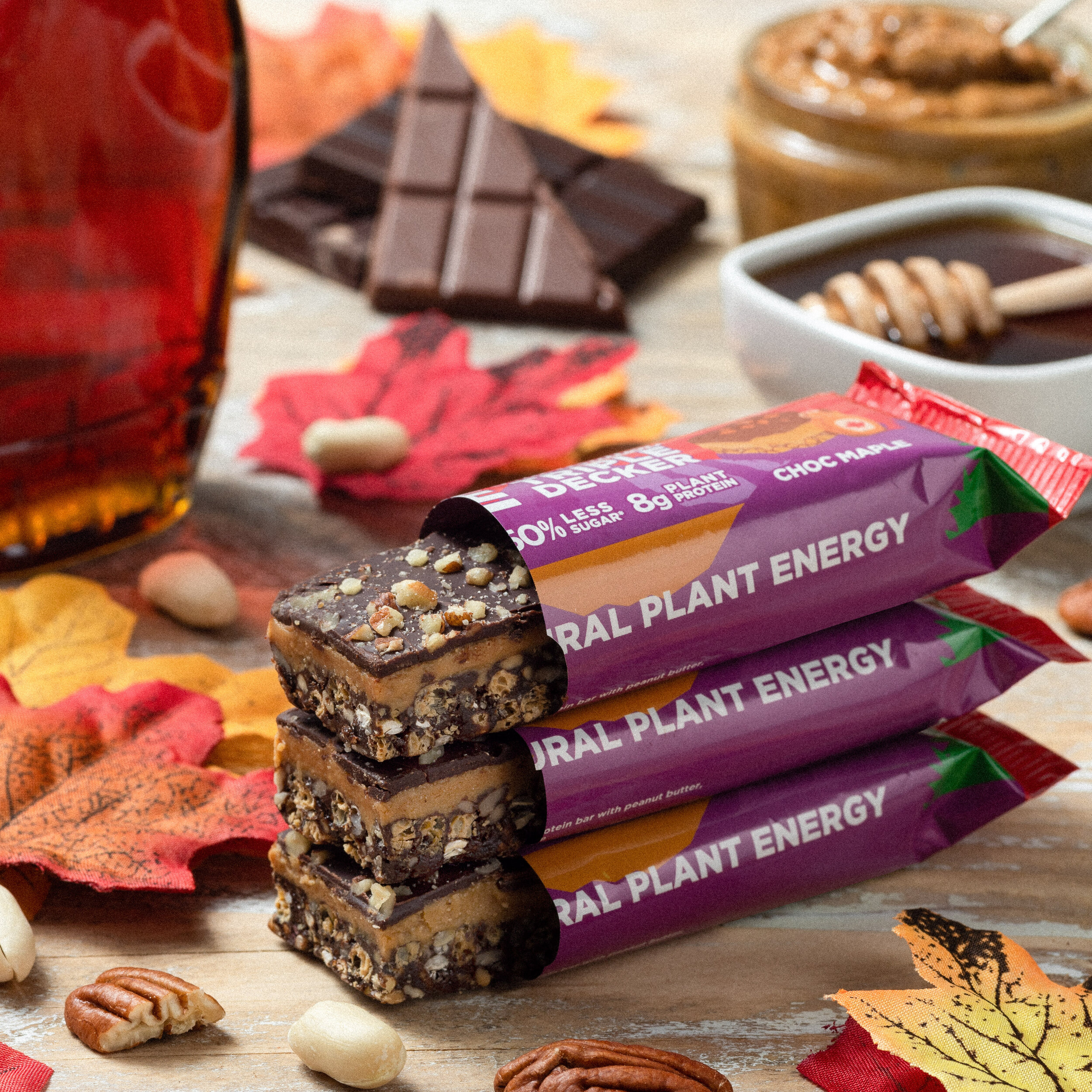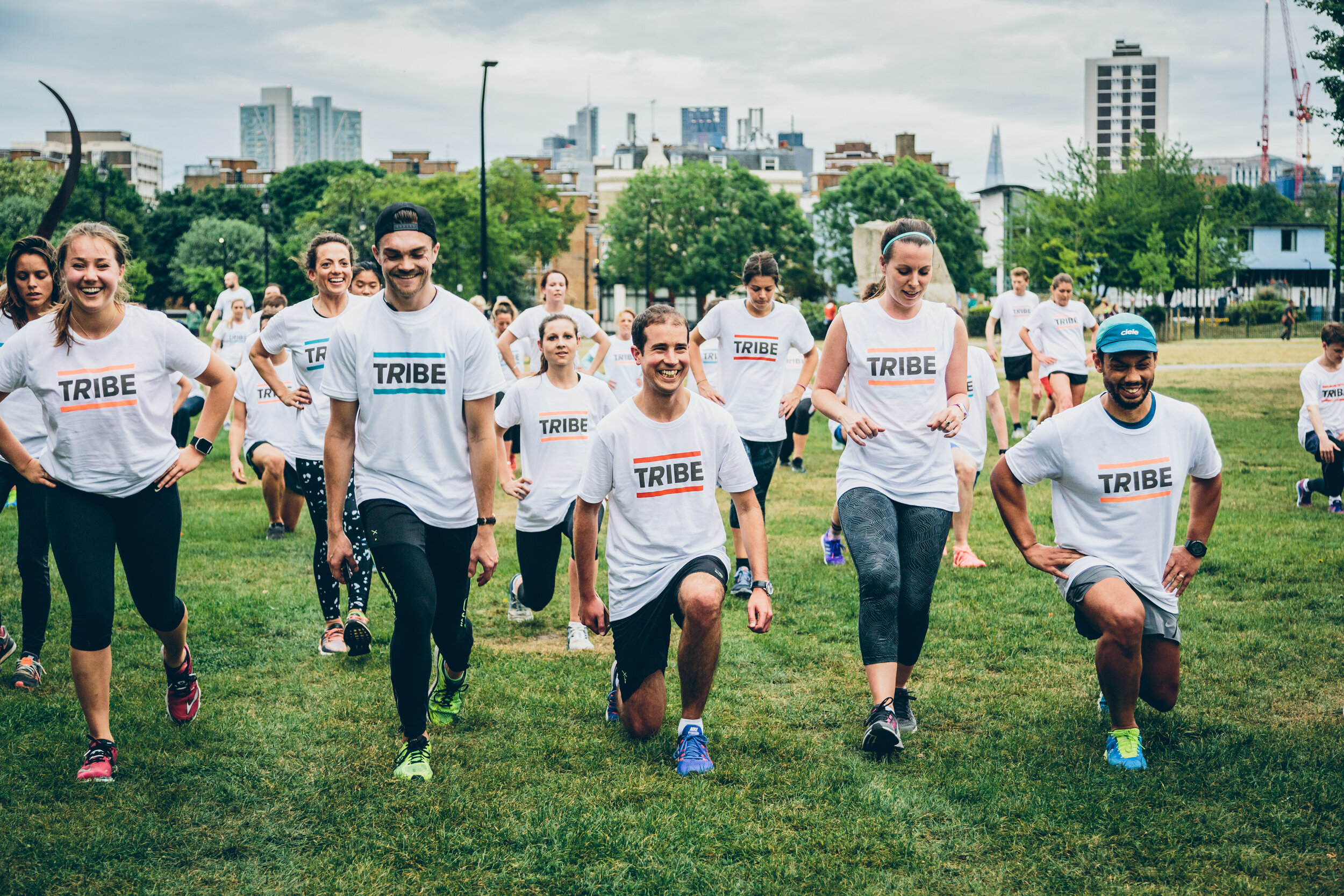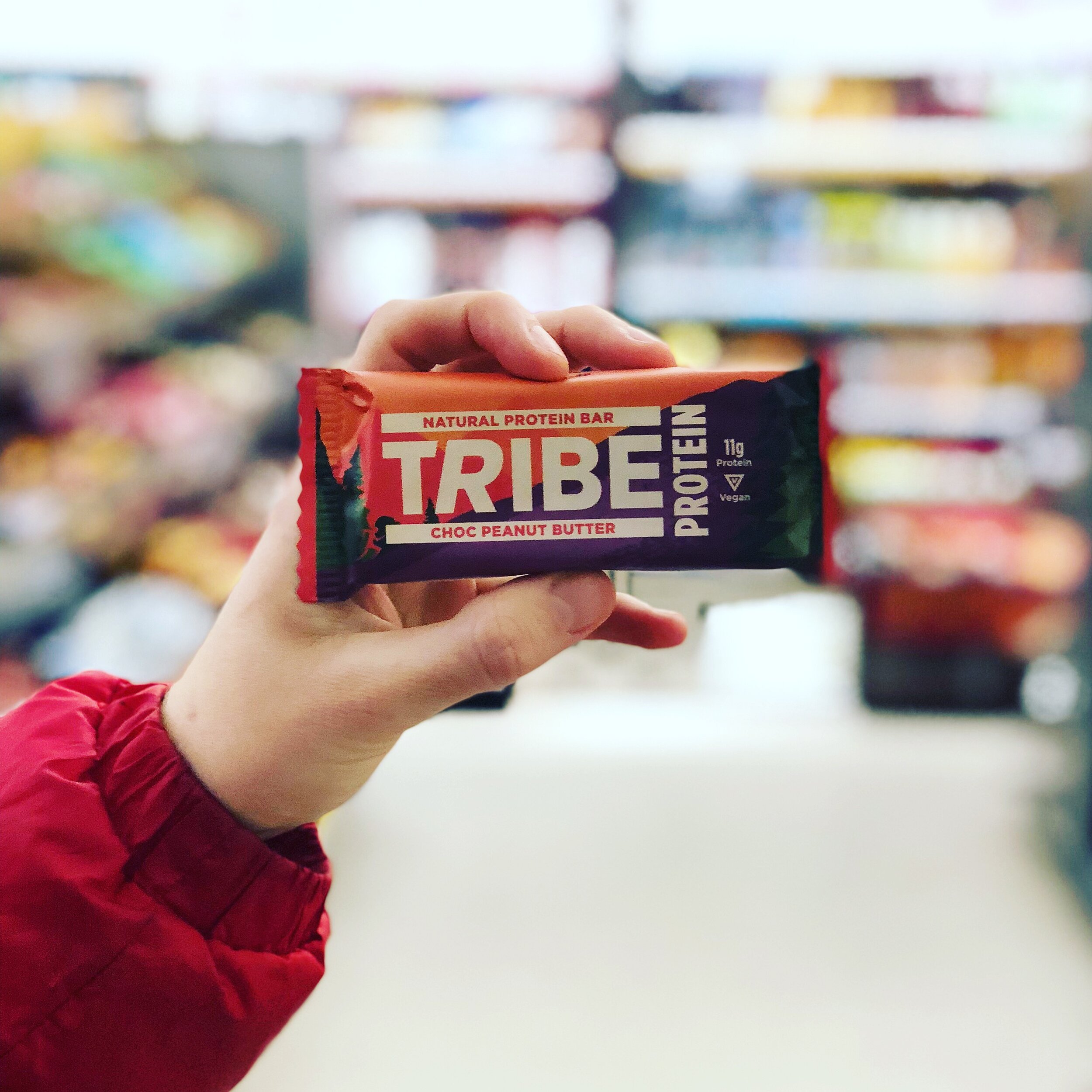Why Tribe first built a community and then a business while on a mission to eradicate modern day slavery
When I caught up with Tom Stancliffe (a third of the Tribe founding team), I was in my regular seat, at home, on yet another video call. Tom, on the other hand, wasn't at a computer screen at all – he was taking my call from Victoria Park, where he'd ventured out for his daily yomp. Rather than the regular pings and bings, the conversation was accompanied by birds chirping and other sounds of nature. I want a piece of that action, which is just the point. Tom and his team have built a community by getting people active and outdoors, and in turn, they've also built a business out of selling products to that community. One action mutually reinforcing the other.
Guy, Tom and Rob looking much happier and healthier than they should be after running 1000 miles.
It was the joy of getting outdoors and a shared love of ultra running that first brought the Tribe team together. Consisting of co-founders Tom, Guy Hacking and Rob Martineau, the team of two ex-lawyers and a banker had escaped the city to follow their passion. Tribe started out wanting to be the 'Graze for runners', but their success was less about identifying a niche and far more about connecting people, giving back and enjoying what they do.
Back in 2012, the team wanted to test their running chops by entering the legendary Marathon des Sables - the 156 mile-long desert race across the Sahara, where you carry everything you need to survive on your back. Having completed the race, the team found out that they had what it took to tough it out in the most extreme conditions, and they also discovered events like these were a great way to raise money for charity.
In his role as a lawyer, Tom had been working with an organisation called The Centre of Social Justice, which was giving legal support to the victims of child trafficking and modern-day slavery. It was a cause the whole team had become passionate about. After getting significant sponsorship for their efforts in the Marathon De Sables, they discovered they could use their love of ultra running as a way of driving awareness and raising money for the cause. With this end in mind, they decided to create their own event.
“We would never have considered the product without the community, and vice versa. We saw it as a holistic offering”
In 2013 Tom, Guy and Rob set off from Odessa in Ukraine for a 1,000 mile run across Eastern Europe, to the Croatian city of Dubrovnik. They dubbed the event 'The Run for Love'. The race was the genesis for everything the business has achieved since. More than 250 runners joined them over the 30 days it took them to finish the race. They ended up raising a total of £250,000 to help pay for a safe house for the victims of child trafficking.
It was during this race that they discovered a problem with the way they fuelled themselves. Tom explained "At the end of that amazing experience we had learnt a lot about ourselves, and we also learned a lot about nutrition. We thought it would be amazing to take the learnings around the community, to set up a nutrition-based business that could also further help the cause of fighting modern slavery." With this goal in mind, they quit their well-paid city jobs to create Tribe. It was a brave leap, but by this stage, the team were used to out-sized challenges.
Tribe were going to sell more natural sports nutrition products to athletes like themselves. Tom described the problem with sports nutrition, "During our training and races, we found that when it came to sports supplements and performance fuel, we had to rely on highly synthetic, badly branded products. Even though this was the time when the vegan movement was becoming embraced by the running community, we often found ourselves standing at the side of the road, having to eat a Mars Bar or some horrible sports supplement. We wanted to have something more natural, tasty and nutritious to give us our energy."
Tribe products are designed to be a more natural and tastier alternative to traditional sports supplements and on the go snacks.
As well as selling products, Tom and the team were also determined to continue building a community and creating events that could be the basis for their charitable contributions. These events were anything from a 30 minute training run for 10 people all the way up to a major multistage race. "We would never have considered the product without the community, and vice versa. We saw it as a holistic offering - with the product fulfilling a need, giving us the platform to create events and build the community, and using the community and events to raise money for the charity".
The more products they sold, the more events they could hold, and more events meant more money raised for charity and more publicity to help grow the business. If the company grew, they could continue to do it again, but bigger and better each time. This type of virtuous cycle is an excellent example of the flywheel model first proposed by author Jim Collins and championed by Jeff Bezos at Amazon.
The initial products were conceived in Rob's mum's kitchen. Aware of their limitations, Tom also added "obviously working very closely with professional product developers and nutritionists to get them ready for launch". First products were energy bars and trail mixes. They then needed a platform to sell them from. Running events seemed a good place to start, but they realised they couldn't possibly be at every event. Runners also needed the products during training, so they needed another way. DTC was the obvious answer because it made products accessible to consumers wherever they were. It also allowed personalisation to tailor their mix of products depending on their sport, taste preferences and training regimes. Lastly, DTC meant it was also easy to offer a subscription service, so consumers could effortlessly receive a regular supply to fuel them through their activities.
With products developed, the brand designed, and a DTC platform set up, Tribe officially launched in 2015. Initially, the brand did their marketing through events that they either set up or other people's ones they often sponsored. Cleverly the sponsorship was often paid for by selling products to these events at a discounted price. From a very early stage, the team could use their running credentials and their growing community to partner with some real fitness heavyweights, like Nike and Lululemon. These partnerships gave them access to an even wider audience.
Tribe training events and races are the main way Tribe builds their community and find an audience for their products.
It was about six months after the business launched, in January 2016, when things really started taking off. Tribe had done a good job of creating brand credibility through events and partnerships. So when they turned on targeted social media advertising that January, they were top of mind for the many people who had made a New Year's resolution to improve their health and fitness.
The brand continued to grow throughout 2016, attracting more customers, adding more products while the team refined their advertising messages and improved the ordering experience. The foundations were laid, and they were ready to ramp things up further.
First up was the Run for Love II - another multistage ultra-adventure race. The ambition was for it to be even longer, have more participants and raise even more money for the anti-slavery cause than the original Run for Love. Run for Love II was a duathlon (running and cycling) - a nod to the many cyclists who were now also using their products. This time the race covered exactly 2000km (1250 miles), across eight countries from Sarajevo to London. Just like the original Run for Love, the Tribe community joined in, either running the whole thing or joining for particular stretches of the route. The event culminated in hundreds of Tribe runners completing the last 20 mile stretch along the North Downs and hitting their £250,000 target for their charity.
Having a pre-built community also proved to be a godsend for raising cash for the business. The community meant that Tribe were in the perfect place to do some equity investment crowdfunding. "Even though we had lots of private investment offers, crowdfunding was a no-brainer for us", recalled Tom. "Consumer brand businesses tend to do well on crowdfunding as the products resonate with a wider audience, and then doubly so as we were such a community-led business. We thought it made sense and would be amazing that our community would also be able to own some of the business." He was right, the Tribe community were eager to invest. Their initial crowdfund target of £1M was smashed within days, and they closed the round at nearly £1.8M. They extended the round due to the interest and also to ensure that as many of their community as possible had the opportunity to buy a stake.
The money raised went towards building the team, developing the product range, investing in the website, and building the brand. They also had a critical goal to achieve - they needed to quickly move away from being a subscription-only DTC business, and create an omnichannel offering.
DTC was perfect in that it would allow Tribe to connect with and cater for endurance runners and cyclists who needed a personalised nutrition plan. The problem was that there was a finite number of people who matched that criteria. Furthermore, training and races were often followed by a recovery period where subscriptions would be paused or cancelled. It's the Total Accessible Market (TAM) problem mentioned by Cornerstone. Tribe catered brilliantly for a specific niche, but that niche was not big enough to sustain it.
They needed scale. To do this, Tom and the team began to work on establishing Tribe in retail stores as an on-the-go snack option. In addition to their subscription service, they also began allowing one-off purchases on both the website and on their own store on Amazon. Retail-ready products were developed, packaging was updated, and the team started to pitch to the retailers. Energy bars and sports nutrition are among the most crowded and competitive categories in food and drink. Despite this, their story, the active community and their focus on making the best possible products convinced the retail buyers to give Tribe a chance. They gained listings in Whole Foods Market, Planet Organic, and Holland & Barrett. They then launched into Ocado, WH Smiths and, crucially, Sainsbury's.
According to Tom, this was a shrewd move "Going omnichannel has been a great decision, it's made the business stronger and more profitable. Ultimately the economics of running a subscription-only business was not going to work for us, so it has been a brilliant thing to launch first into eCommerce and then retail".
The launch into retail required an increased product range and improved packaging.
The increased revenue and profitability generated by the new channels also gave the business the confidence to return to their community to raise more investment. In 2019 they raised a further £1.4 million via crowdfunding to continue to support their retail growth and expand into Europe via both the DTC model and local retailers.
Unsurprisingly 2020 didn't shape up as planned. However, Tribe has weathered the storm. The various lockdowns, we have all had to endure, have seen an increased demand in health and fitness products. Even with lower retail sales, their online channels have allowed the business to grow. They remain in good shape.
Tom and the team have learnt a lot about building brands, developing products, and running an omnichannel business. However, it is still the love of adventure and the determination to end modern-day slavery that spurs them on. 1p from every Tribe product sold is donated to the Tribe Freedom Foundation (now a stand-alone charity). It's still the events which really drive donations and raise awareness. When talking about the foundation, an animated Tom said, "The charity is what gives us a purpose and reason for doing what we do. It also gives everyone involved a real sense of ownership and satisfaction as it [the foundation] continues to grow and develop."
Tribe have now founded their own charity. Making it easier to raise funds and channel donations to support their mission to end modern day slavery.
As the best way to raise money and awareness for the foundation is events, the team continue to focus on races and training events both big and small. The third Run for Love took place in 2019 - this time a 253km race across the volcanoes of the Azores raising another £150k. The publicity generated around the event also helped with that year's crowdfunding.
The new investment will help the team further grow the business and enable them to make better products to keep us healthy. They'll use the brand to keep us fit by staging more training and race events, and they'll continue to use the events as a platform to raise money for their foundation. With more than £750,000 already generated for the charity (the team are on track to hit the magic £1M mark this year) and with more products and retailers on the horizon, Tribe has built a robust and admirable business model. Let the flywheel spin.




